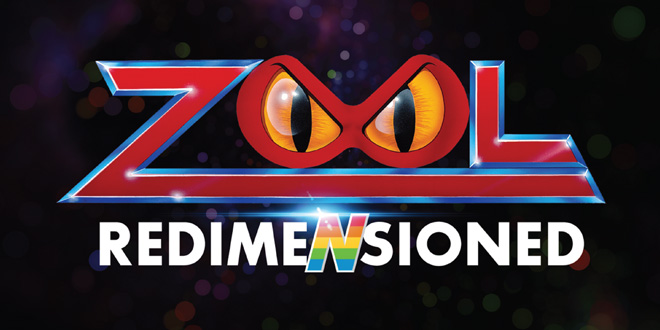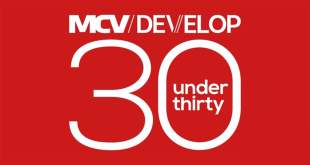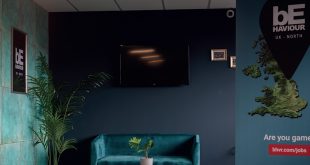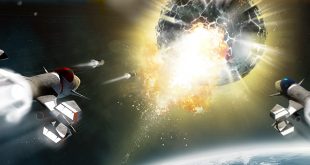

 Dr. Jacob Habgood, Owen Lyons, and Ntokozo Tshuma, three of the team on Zool Redimensioned at Sumo Digital, talked to Vince Pavey about what it was like bringing the ninja from another dimension back for a brand-new generation of hardware.
Dr. Jacob Habgood, Owen Lyons, and Ntokozo Tshuma, three of the team on Zool Redimensioned at Sumo Digital, talked to Vince Pavey about what it was like bringing the ninja from another dimension back for a brand-new generation of hardware.
Zool is one of those critically acclaimed titles from the era of mascot platformers, where cartoon characters like Sonic the Hedgehog, Super Mario and Bubsy the Bobcat reigned supreme. While it didn’t necessarily do anything new for the wider genre, it was notable for having great graphics and sound, as well as crisp, fluid gameplay, appearing on a list of platforms that included the big consoles of the day and a few varieties of home computers.
The game could quite reasonably, and even amicably, have gone the way of James Pond, Superfrog or Aero the Acro-Bat, and faded away into the ether as one of those games that only a handful of people of a certain age fondly remember. Instead, it has now persisted into 2023 with the skillful assistance of groups of tenacious students from the Sumo Digital Academy, who have remade the game and its engines from scratch in a way that is simpatico with both modern hardware and the tastes of their users. But why Zool, and why now?
“Every year at GDC there is an arm-wrestling competition between the owners of 8-bit software houses from the 1980’s, and Ian Stewart had been eating his Weetabix all year…” laughs Jacob Habgood, director of education partnerships at Sumo Digital, and former Gremlin Interactive programmer.
“It’s all about history and geography. Sumo Digital was founded by ex-Gremlin staff, and the Sumo Academy had access to the IP through Ian Stewart, who has always been a generous supporter of my educational projects,” recalls Habgood. “Zool certainly fuelled Gremlin’s success back in the 90’s and Sheffield’s games industry probably wouldn’t be as strong today without Zool’s contribution to its growth. I think most of the apprentices at the academy have all required some convincing on Zool to begin with – many are younger than him! – but some have a stronger connection with the ‘Ninja from the Nth Dimension’ now than us old Gremlins.”
A remake of Zool for modern consoles had been pitched to Ian Stewart before, but had been passed on a few times. It was one student’s grasp of the core ‘game feel’, however, that convinced Stewart that now was the time to move things forward.
“I gave the Zool assets to Owen [Lyons] as a bit of a skills test and it just snowballed from there really,” explains Habgood. “He did a great job of capturing the movement mechanics of Zool – in fact better than any student before him. This isn’t the first time I’ve used Zool as part of an assignment, but it’s the first time that Ian was convinced enough to commit to making a remake. The development team that worked on the new version of the game was fairly small, only growing when the scope of the project demanded it.
“There were five programming students who made the original PC version of Redimensioned – including writing the engine from scratch – with support from a student artist and a couple of programming interns towards the end,” says Habgood. “There was then a group of Sheffield Hallam programming students who worked on porting the engine to the PlayStation 4 and then five more programming apprentices and a junior artist that added the multiplayer game modes and shipped it on PlayStation.”
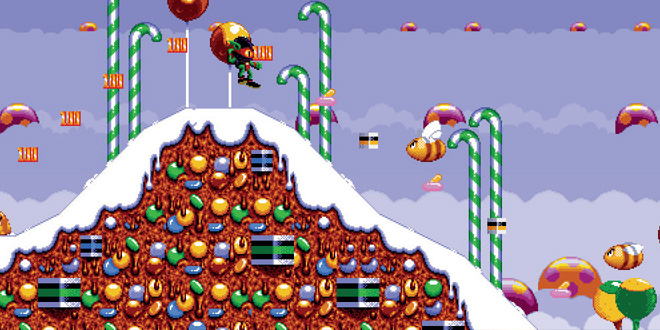
COYOTE TIME MANIA
While taking the opportunity to reimagine Zool for new consoles, the team looked towards two of the best modern platformer games for inspiration and guidance. “When we were making Zool, I was getting interested in speed running and had picked up Celeste because I really loved the movement in it,” says Owen Lyons, programmer on Zool Redimensioned on PC.
“I’d also been playing Sonic Mania and appreciating how much work had been done to modernise the old games’ movesets without losing the original feel. If you play those games as well as Redimensioned, you can see how they influenced me in regards to the new moves like the Heavy Landing Dash which bears some similarities to the Drop Dash in Sonic Mania. I think Celeste influenced a lot of less-visible game feel, with features such as jump buffers and ‘coyote time’.” [Coyote Time is a term in platformer game design that relates to how long a player can stand on nothing and still make a jump before falling. It references the famous cartoon Roadrunner’s long term antagonist and his gravity defying antics.]
“There are also level specific mechanics that we reworked to function like certain elements of those games. The strength testers in the Fairground world were largely just an attempt to see if I could replicate the Traffic Light Blocks from the City world of Celeste!”
Another thing the team had to keep in mind while designing the new version of Zool was that porting the game to other platforms had never been an exact science in the first place, with the various 1990’s versions of the adventure having quite a few differences between them on every platform the game came to. This meant remaking people’s memories, rather than perhaps what they had actually played.
“The original Zool has a very fast and loose feel to the character. It’s almost slippery, which I think is part of why the original game has always been compared to the classic Sonic games rather than the Mario games of the same era,” says Lyons.
“I think to capture that, I really focused on ensuring that players would be able to build up a lot of momentum and, if they were skilled enough, maintain that momentum over an entire level. But because there’s not a single definitive version of the original – the Amiga, SNES, Mega Drive, Master System and Game Boy versions of the game all control differently – it was more important for us to replicate the way that the controls made the player feel, rather than the exact metrics of the original games.”
They also had to factor in the tastes of modern audiences, and worked to accommodate for different tolerances for just how punishing retro game design can be. “A big priority for us was opening up the different ways that people might want to play the game,” continues Lyons. “This led to the two different modes, ‘Redimensioned Mode’ where the collectibles were optional and there was a double jump to let players traverse levels faster, and ‘Ultimate Ninja’ which was designed to play more like the original game.
“The idea was that Redimensioned Mode was a better fit for first time players (and those looking to master movement mechanics), while Ultimate Ninja was a better fit for completionists (and those with fond memories of the original game). Rob also reworked quite a few of the levels to facilitate these playstyles and make them a little less maze-like than the original games; to be more inline with modern standards of level design and just to make things work with the new aspect ratio.“
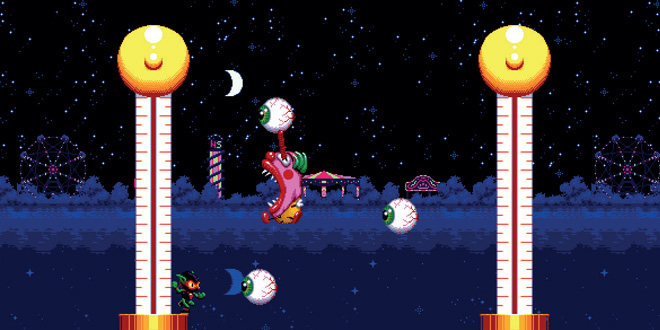
LIKE A BOSS
Another change in the latest release of Zool was the addition of seven brand-new boss fights. While these new fights were partly added due to necessity, thanks to aspect ratios, the team soon found that designing new boss battles can actually be pretty fun.
“Early on – as soon as we’d settled on both remaking the entire game utilising a modern aspect ratio and zoom level – we realised that the original boss fights wouldn’t work as they heavily relied on taking up a certain percentage of the screen space at once,” remembers Lyons.
“This necessitated reworking the boss fights to still maintain a sensible level of challenge. I think once we knew this was something we had to do we really leaned into it and used the boss fights as an opportunity to express ourselves more as we had much more scope to change things there [compared to remaking] the levels. I remember people on the team getting competitive about this and trying to one-up one another with the complexity of the boss fights; the culmination of these being the multi-phase fights in the Tool and Desert worlds.”
“Playing through the new bosses was what I found most fun when I first got my hands on the game,” explains Ntokozo Tshuma, programmer on Zool Redimensioned’s PlayStation version. “Everybody agreed that they should definitely make an appearance in the multiplayer modes. We wanted to have a way of making sure that the players stay close together and are always moving around and some of the bosses were perfect for that. Others needed a bit more of a change, but we always tried to keep it recognisable.”
With Gremlin Interactive studio veterans on board with the remake project, the team had plenty of guidance to draw upon when it came to making sure the new version of Zool retained its old school feel.
“We had the privilege of speaking to Ian Stewart early on about our plans, as well as being guided throughout by George Allan who both worked on the original game and is one of the trainers at the Academy,” explains Tshuma. “We also reached out to previous members of the Academy who worked on the remake to get their ideas about the design of the game. Ultimately, it came down to using the building blocks that made up the original levels, and mixing the themes so that the new modes and content would seem fresh but feel familiar.”
“A student artist called Sandesh made a lot of the new interface screens in the front end while on a placement with us from Sheffield Hallam University,” explains Habgood. “The new pixel art for the multiplayer modes was made by Martyna, our very own academy artist. If you can’t spot which bits are new then she’s done her job well.”
Working to a clear end goal of creating a version of Zool that was on par with (or better than) the versions of Zool that already existed, meant that issues encountered during development were few and far between. Except for a hurdle involving licensed lollipops, anyway.
“Lockdown was a bit of a challenge for us, but let’s pretend that never happened,” winces Habgood. “We had some interesting legal hoops to jump through when a certain brand of lollipops had to be retrospectively removed from the emulated version of the game. I felt like a king of all hackers when I managed to do it, but was soon brought down to earth when we realised that the US version of the game never had them in the first place!”
“The game did start crashing intermittently at one point in development and the cause was at first pretty difficult to pin down,” adds Tshuma. “It took our collective efforts scrutinising the crash dumps and debugging the memory to make sure that the issue was gone for good.”
“We definitely had lots of big ideas about the different directions that we could go in with the project early on,” continues Tshuma. “But as we learned more throughout the apprenticeship and it gave us a better idea about the size of the challenge, we started to look at things that were a bit more feasible. Just finishing off a port of Zool: Redimensioned for the PlayStation 4 was a big task and we were excited about the prospect of bringing some extra content to the game along with it.”
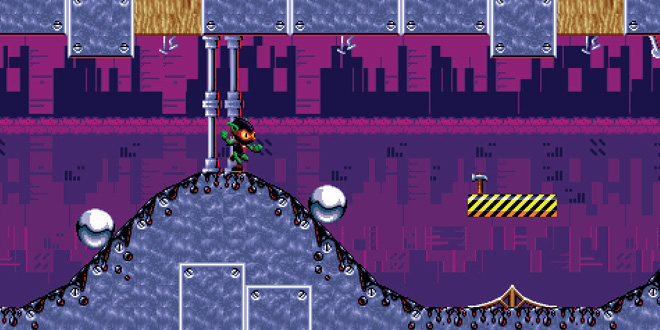
WHAT’S NEXT?
As a third-party mascot character during the heyday for that sort of thing, Zool was no stranger to appearing on any console that would have him, as often as the platform holders would have him. Zool Redimensioned has added at least three more systems to the somewhat lengthy list of game versions available, and has been received warmly by almost all who remember the ninja gremlin, and even some who are encountering him for the first time.
“People who remember the original Zool game fondly (and even some who don’t) have been very complimentary about Redimensioned,” says Habgood. “It feels great!” adds Tshuma, enthusiastically. “I was happy with what I was able to contribute and what we were able to put out there, and it’s lovely to see that those who got to play it feel the same.”
Future versions for other machines, however, are still up for discussion.
“The academy trainers would like to do a Commodore 64 version, but that’s clearly not going to happen,” jokes Habgood. “I guess the Nintendo Switch would be logical, but we’ll have to see.”
While Sumo Academy will continue on, it’s unlikely that Zool will be a part of its plans for the future. “We’ve got irons in a couple of fires, but a Zool 2 remake is unlikely. We’re moving on from the Nth Dimension,” confirms Habgood.
But would the students that worked on Zool suggest that future students, or other wouldbe developers make their own remakes to learn the ins and outs of design, then? Well, that all depends on which game is being worked on.
“I think remaking Zool was a bit of a blessing, as it’s a game that people have fond memories of, but people don’t often actually replay,” says Lyons. “This means people’s memories of the original are more nostalgic, fuzzy and less specific. If we had to remake a game that a larger portion of people are still actively playing, people are a lot fussier about maintaining the exact mechanics of the original.
“The amount of wiggle room that we were allowed on Zool Redimensioned let us express ourselves and explore ideas we were interested in, but we got to avoid lots of the issues that face developers when working on completely original projects like feature and scope creep, a lack of direction, or a clear endpoint. That’s a privilege I’m not sure we would have been granted on a remake of a more iconic game – not that Zool isn’t iconic in his own way! Working on a remake also gave us a clear target audience and lots of points of contact for established industry figures which was a real benefit for us as completely new developers.”

 MCV/DEVELOP News, events, research and jobs from the games industry
MCV/DEVELOP News, events, research and jobs from the games industry
